














The Siesta Key Beautification Alliance is working to elevate the rest of the Key to reflect the pristine standard of its top-ranked shoreline
By Natalie Gutwein
If you live on Siesta Key, you know firsthand the toll last year’s storms took on our island. After the hurricanes that swept through unexpectedly, we were left to patch roofs, replace fences, and rebuild parts of the island we love.
But amid the debris, something powerful began to emerge, a unique voice from residents, business owners, and even visitors, all echoing the same message –Siesta Key needs attention.
That message came up everywhere: at Siesta Key Chamber meetings, Siesta Key Association gatherings, even during casual conversations and realestate showings. People weren’t just noticing the
damage— they were noticing the potential for something better. That’s exactly how the Siesta Key Beautification Alliance (SKBA) was born.
From Conversation to Action
The SKBA is made up of residents, merchants, property owners, and representatives from both the Chamber and the Siesta Key Association. I personally jumped into this project because I wear both hats – a homeowner and a business owner – and I believe a homeowner and a business owner - this could be one of the most transformative efforts Siesta Key has ever seen.

The Siesta Key Chamber of Commerce has a new leader.
In early June, Siesta Key Chamber of Commerce Board Chair Eric Fleming announced the appointment of Sarah Firstenberger as the organization’s new CEO. Firstenberger steps into the role that was held for nine years by Executive Director Ann Frescura, who retired this spring.
By Jane Bartnett
“Sarah is uniquely equipped to guide the Siesta Key Chamber into an exciting new chapter,” said Fleming in a statement that was sent to members of the organization.
“Sarah joins us with an impressive background in marketing, events and community engagement and a passion for connecting people, places, and purpose. A Sarasota local, Sarah brings more than a decade of
experience in audience engagement and experiential programming, most recently serving as director of marketing and events at the Community Foundation of Sarasota County.”






During her time at the Community Foundation, Fleming reported, Firstenberger “developed strategic marketing campaigns to communicate the foundation’s impact across diverse


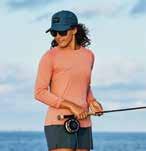














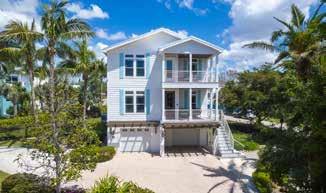







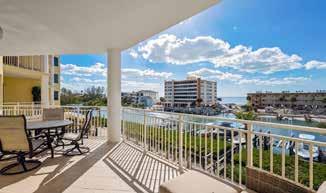


Damages from the 2024 hurricanes must be repaired before county rolls out permitting requirements for boating businesses
By ChrisAnn Allen
“We’re still in recovery mode, and we’re trying to stay afloat,” Capt. Doug Ricciardi, a Sarasota charter fisherman, said June 3, on behalf of hundreds of similar businesses in the county affected by the 2024 hurricanes.
“We’re not asking for a permanent change…we understand the concerns of the public, we just need more time,” Ricciardi continued. “Imposing new permitting requirements right now adds pressure we simply can’t handle.”
On June 3, Nicole Rissler, County Parks and Natural Resources Director, gave an update regarding progress with the county’s new permitting program to manage use of county water access points by commercial boating businesses. Following this update, the board unanimously approved a motion made by Commissioner Mark Smith, whose district includes Siesta Key, to delay the start of the new commercial water-based charter boat and tour operations permit program for six months, with a staff update on park reconstruction progress at that time.
The delay will allow all charter, tour boat and other marine-based businesses to continue operations without
concerns of enforcement of fines from the county for continued use of park facilities for embarkation and debarkation.
In August 2022, due to an upswing in unauthorized activities, parks and recreation staff began researching and conducting surveys to start the process of establishing a permit program for fishing charter and tour boats within the county water access parks. The businesses do not formally conduct business at the waterfront parks but use them to pick up and drop off passengers. However, parking and use of the parks must be available for everyone in the county, and concerns had arisen due to limited capacity.
In October 2023, the BOCC requested that County Administrator Jonathan Lewis bring back guidance to possibly convene a task force to investigate unauthorized commercial activity and delegate authority for approval of penalty fees. Then, in February 2024, the board adopted a resolution authorizing the creation of a task force to determine a mechanism for legal operation of such businesses and to report back with results and recommendations. In September 2024, the board accepted the task
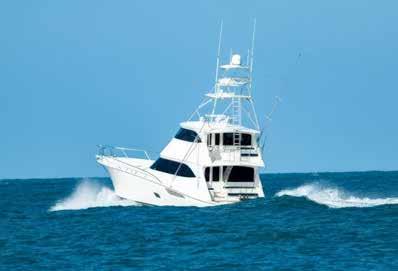
force report with a permitting plan. In October 2024 the board adopted an ordinance prohibiting docking, mooring or anchoring in such parks without a county issued permit.
“So, with the help of the state attorney and the office of county attorney, those updates were made and approved by the board last fall,” Rissler said on June 3.
This program allowed for the legal operation of “Operator of Uninspected Passenger Vessels” (OUPV) license carrying charter or tour boats within the permit program, by zone, with zones including north county, midcounty and south county. Those
with permits can pick up and drop off customers at any parks within their permitted zone.
The task force determined the number of permits by zone on 50% of the available parking within each park, which resulted in 37 permits for north county, 48 for mid-county and 39 for south county, with two permits per company, per zone as the final approved rule.
The recommended process included bids starting at $1,200 per permit per year, with a term of three years with two oneyear renewals available, with proceeds after management costs going towards the purchase of
additional waterfront properties for such uses.
Rissler said the marine park location use is severely constrained due to damage from the 2024 hurricanes and was looking to the board for the future direction of the permitting program.
Commissioner Joe Neunder, whose district includes the southern portion of Siesta Key, suggested a delay in enforcement until parks have been rebuilt.
“I think it is appropriate and certainly well within being fair, to our community, because of the rain events that we had last year maybe we need to just kind of delay this,” Neunder said.
“So, I guess from my position, I feel comfortable saying that I think if we can delay the process a little bit, for our fisherman, our charter captains and the community, allow your staff, allow our capital projects team to do what they do, get some repair work, keep us updated, simply because last year was, quite frankly, such an anomaly, that we’re all kind of dealing with things subsequent, in many different areas and aspects of not only government but the private sector in our community as well.”

Sarasota County will receive more than $210 million in support following 2024 hurricanes
By ChrisAnn Allen
Sarasota County is one step closer to $210 million in federal funding assistance.
The county announced on June 5 that it received official approval from the U.S. Department of Housing and Urban Development (HUD) for the action plan for the Resilient SRQ Community Development Block Grant – Disaster Recovery (CDBG-DR) for the 2024 storms, Debby, Helene and Milton.
“So that’s really exciting news for us, for staff, for the county, for the community and those that have been impacted by the storms,” said Steve Hyatt, a financial management division manager with Sarasota County government, who answered questions on June 5 during a Zoom session detailing what comes next.
The funding is the second allocation from HUD, which is providing $12 billion in assistance to areas around the country heavily impacted by natural disasters. The first allocation for Sarasota County was over $201 million following Hurricane Ian in 2022 and led
to the creation of the Resilient SRQ program in 2023 to support recovery.
“Staff embarked on a fairly aggressive process to develop this action plan starting in January after we received the allocation notice from HUD that we would receive $210 million, and we conducted a great deal of outreach over the course of a few months, with surveys, public hearings and public meetings, with several board meetings where our board decided where to allocate funds for this action plan, ” Hyatt said, adding Sarasota County was among the first in the state to file its plan and receive HUD approval.
With the approval comes a grant agreement which was under review by county staff. Upon execution by the county and HUD, the county can provide funding assistance to launch programs outlined in the plan. Objectives include reimbursement for housing rehabilitation and reconstruction, as well as construction of new, affordable multifamily housing. “So, it’s
a continuation of what we’re still currently doing for the Hurricane Ian program and those housing efforts,” Hyatt said. Additionally, he said the board set aside “a great deal of funding for infrastructure,” including dredging and stormwater projects to increase long term resiliency.
Hyatt said, as approval had been anticipated, staff had briefed county commissioners on June 4 on the program and inquired how the applications might be scored by staff for various projects contained in the plan. “We were just trying to lean forward to get the funding out there in the community faster,” he said.
The program includes surveys for those affected by the storms, of which more than 800 were submitted and are undergoing review, according to Hyatt. He said that soon the staff will be performing site inspections of storm damaged homes to provide assistance through contractors and reimbursements.
A breakdown of funds includes $63.3 million allocated for
general housing, $30 million of which is for the new, affordable multifamily housing, with that application process slated to start this summer. Additionally, $25 million will go to homeowners for rehabilitation and reconstruction and $8.3 million for reimbursements.
When asked about the timeline for reconstruction and repairs, Hyatt said the process requires significant documentation, including site inspections, environmental clearances and assuring benefits are not duplicated through other means such as insurance. “This can be a process that can certainly take several weeks, a few months to navigate, which is unfortunately just the way in which the program operates,” he said.
When asked whether residents of areas such as Siesta Key, which were heavily impacted by the storms but generally have higher income households, will receive HUD assistance through the program, Hyatt said lower median income communities must be prioritized first, but they anticipate broadening the
scope to include those at a higher median income, as long as it is a primary residence which was damaged in one of the 2024 hurricanes. “Whether it is the county’s projects or some of the city’s projects or some nonprofits that might be interested as well in some resiliency-type projects, we definitely think we’ll be able to support those communities that have been impacted,” Hyatt said regarding Siesta Key and similar areas.
“The good news is, as I mentioned, we learned a lot from Hurricane Ian,” Hyatt said. We’ve learned where our strengths and weaknesses are, the communications side and improving our applications… especially with how quickly we’ve been able to get our action plan approved, we’re hoping to hit the ground running here quite quickly and get people through this process quicker than we did last time, with Hurricane Ian.”
For more information about the program, visit the county’s site at resilientsrq.net.














Siesta Beach Continues to
Earn National, Global Praise Siesta Beach has earned more national and international recognition this year, landing at No. 8 on USA Today’s Readers’ Choice list of the 10 Best Beaches in Florida.
Earlier this year, the beach was also named the No. 1 beach in the U.S. and No. 4 in the world by Tripadvisor’s Travelers’ Choice Awards Most recently, The World’s 50 Best Beaches list for 2025 included Siesta Beach among the top beaches worldwide, based on evaluations by over 1,000 travel experts.
Longtime Patriot’s Pier
Volunteer Annie Overbeck Passes Away
Annie Overbeck, a devoted member of the Patriot’s Pier flag ceremony brigade, passed away on June 3. Overbeck was a beloved presence at the daily sunset flag ceremony on Siesta Key, a tradition started by her father, decorated WWII veteran Captain Ralph Styles, 48 years ago. Following her father’s passing in 2009, Overbeck and her friends continued the ceremony. During the winter months, she often served as the group’s videographer—livestreaming the event to the Patriot’s Pier at Sunset Point Facebook page—and regularly joined in folding the flag each evening.
Known for her warmth and welcoming spirit, Overbeck will be deeply missed by the community
she helped bring together under the flag.
Former Siesta Key Resort
Manager Accused of Embezzling $110K
A former manager at a Siesta Key resort was arrested last month after deputies said he stole more than $110,000 from the business.
Billy Prater, former manager of Siesta Key Palms Resort, was arrested May 21 and charged with fraud, according to the Sarasota County Sheriff’s Office. Investigators said Prater manipulated the reservation system to cancel or give away rooms, then pocketed the payments.
The resort’s owner reported the suspected fraud to authorities in November after a financial audit revealed missing funds. An audit later showed Prater allegedly stole $110,470.19 between late 2023 and 2024.
Deputies said Prater also paid a handyman through multiple payment platforms, though it was unclear what work was performed and whether the amounts were inflated. He is additionally accused of committing FEMA fraud by adding unauthorized overnight stays to FEMA accounts.
As a result, the resort owner was required to reimburse FEMA $7,003, according to the report.
Prater was released on a $50,000 bond on May 22. His arraignment is scheduled for June 20.
Letter to the Editor
I am writing to bring urgent attention to a growing issue on Siesta Key that affects not just one neighborhood—but the entire character of our bayfront community and the health of Little Sarasota Bay.
A neighbor on Midnight Pass Road has installed a large canvas covering over his boat, which significantly obstructs the view of the bay. While this may sound like a simple neighbor dispute, it has far broader consequences for Sarasota County. If approved, this boat covering could set a precedent that allows other homeowners to do the same— resulting in widespread visual blight and diminished waterfront aesthetics throughout the region.
The county has previously informed the homeowner that the structure is not permitted, but he has since retained legal counsel and is challenging the decision before a local review committee. We were told that neighbors within a 500-foot radius will be notified of the hearing date. However, this is not just a local issue—it impacts every resident and visitor who enjoys the natural beauty of Sarasota Bay.
Allowing these structures would:
• Obstruct iconic views of the bay, a key feature that defines

the value and identity of Siesta Key;
• Devalue surrounding properties, according to local real estate professionals, including my neighbor who is a licensed agent;
• Encourage visual clutter and overdevelopment along a fragile and highly visible waterfront corridor;
• Set a dangerous precedent that may be difficult to reverse.
Can you imagine an entire stretch of bayfront properties lined with canvas-covered boats? It would drastically change the landscape and charm that attracts residents, visitors, and
homebuyers to our area.
I urge you to investigate and help bring broader public attention to this matter before it quietly sets a new, damaging precedent. I am happy to provide further documentation, including communications from county officials, photographs of the obstruction, and expert opinions from real estate professionals who understand the impact on property values.
Please feel free to contact me at your convenience. Thank you for your time and for helping protect the beauty and character of Sarasota Bay.
Karen Martellucci

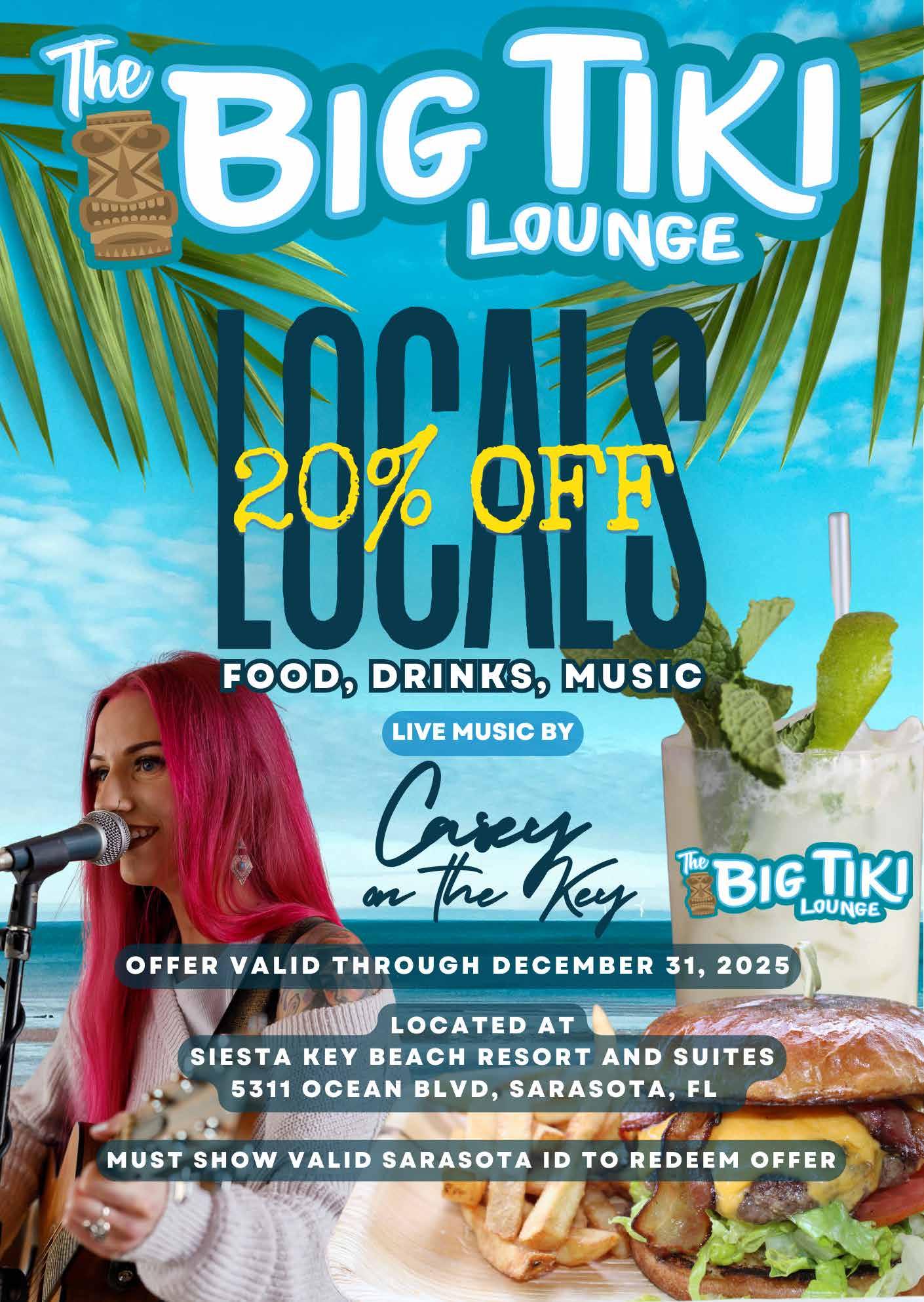
By Jane Bartnett
Happy birthday, America! On the 4th of July, as the sun sets over Siesta Key, the night sky over Siesta Beach and most of the island will be filled with dazzling fireworks by the world renowned Zambelli Fireworks company, known as the first family of fireworks. Thousands are expected to enjoy the magical star-spangled show.
Eric Fleming, chair of the Siesta Key Chamber of Commerce Board, reported that the Chamber was successful in reaching its $50,000 fundraising goal to support the 2025 Fourth of July Community Fireworks Celebration on Siesta Beach.
“We’re incredibly grateful to everyone who contributed— local businesses, residents, and chamber partners. Reaching our fundraising goal gives us the green light to move forward with planning an unforgettable 2025 show. It’s a cherished tradition and we’re proud to continue bringing it to life on Siesta Beach,” said Fleming.
The Fourth of July fireworks display is one of Siesta Key’s most important community events. Residents and visitors alike fill the white sandy beaches to see the brilliant display and to celebrate this important day in our nation’s history. The show is expected to begin at approximately 9:00 p.m.
One of the best places to see the display is on Siesta Beach, at 948 Beach Road. Parking and admission to Siesta Beach is free but the parking lot is expected to fill up early. Crescent Beach offers another good location for watching the fireworks. Organizers urge everyone to keep in mind that personal fireworks and pets are not permitted.
This year’s fireworks show marks the 34th year for the heralded event. The Siesta Key Community Fireworks Show is one of the Zambelli company’s largest 4th of July events.
A good way to get to the fireworks and avoid the

congested parking lot at Siesta Beach is to hop on the free openair Breeze trolley, the 77 Siesta Islander, run by Sarasota County. The trolley provides free hop-on, hop-off service up and down Siesta Key from Turtle Beach Park and Campgrounds to Siesta Key Village. It runs every 30 minutes from 8 a.m. – 10 p.m. Visit breezetransit.net/breezerider or download the Breeze Rider app to track the 77 Siesta Islander.
The open-air free Frog Hop trolleys and vans run daily from
8:00 a.m. to 11:30 p.m. between Siesta Key Village and Turtle Beach. Call 844-367-4467 to learn more.
Looking Ahead to July 4, 2026
America’s 250th Birthday
Later this month, the Chamber expects to begin fundraising efforts for next year’s July 4, 2026, fireworks celebration that will recognize the 250th birthday of the United States and the
signing of the Declaration of Independence on July 4, 1776. This historic event is known as the nation’s Semiquincentennial, as well as America 250.
In 2016, Congress established a non-partisan national commission called the U.S. Semiquincentennial Commission. It was created to plan and orchestrate the 250th anniversary of the signing of the Declaration of Independence.
Appointed by leaders of both parties from the U.S. House of Representatives and the U.S. Senate, the leadership committee is made up of 16 private citizens along with four U. S. Members of Congress and four U.S. Senators, as well as 12 ex-officio members from all three branches of the federal government and its independent agencies.
Chairperson Rosie Rios, who was appointed in 2016 by President Joe Biden, is a former Treasurer of the United States and former CEO of the Bureau of Engraving and Printing and the U.S. Mint. Rios is the CEO of Red River Associates, an investment
management consulting firm. She is quoted on the America 250 website as saying “America’s 250th anniversary is more than reflecting on our past, it’s about honoring the contributions of individuals who built this country, the innovations that put this country on the map and a man on the moon, and imaging what the next 250 years might look like for our children and the generations to come.”
A non-profit organization named America 250 was also created to support the Commission by focusing on procurement, development, and facilitating expert service providers for programming purposes.
Next July, Siesta Key will join communities around the nation in celebrating the 250th anniversary of the founding of America. It should be a festive time.
Learning to say the word semiquincentennial may be a yearlong project.
Happy 4th of July!



Good fishing makes for good tourism. And with Mote Marine Laboratory’s record-breaking release of 28,000 juvenile snook throughout Sarasota County waters in late May, the future of local fishing is looking up.
The release represented a milestone for Mote’s Fisheries Ecology and Enhancement Program which monitors and replenishes local fish populations. Previously, the largest snook release had numbered 12,000. In both cases, the fish were spawned and raised at the Mote Aquaculture
By Hannah Wallace
Research Park, built east of I75 off Fruitville Road in 2001.
As an apex predator, snook play a vital role in maintaining ecological balance. At the same time, snook populations are sensitive to environmental changes so intervention—in this case, supplementing the wild population with farm-raised fish—is sometimes needed to ensure strength and stability throughout the food chain.
As marine ecology goes, so goes Sarasota’s tourism industry. Local waters are the source of so much of our appeal,

and their health is necessary to support the local economy. But it’s not just the overall state of the water that’s important; often, the fish themselves are the draw.
Fishing represents a statewide economic impact of $13.9 billion, with $9.2 billion of that coming from saltwater fishing alone, according to the Florida Fish and Wildlife Conservation Commission (FWC). And in a county with nearly 40 miles of coastline, a wide range of scenic inland waterways and the great, green Gulf stretching out to the horizon, fishing is at the heart of Sarasota’s economy.
Snook are a particularly special part of that allure. While many fun-to-catch species are also targeted by commercial operations that provide fresh fish for restaurants, you’ll never see snook on the menu, here or anywhere else: “No commercial harvest or sale of snook is permitted,” according to the FWC. These famously fierce fighters, which also happen to be delicious table fare, are reserved for recreational anglers alone.
For half of the year, snook are a catch-and-release species only. And that alone appeals to anglers who are up for the challenge. But in the Sarasota area, from May through August, and in peak tourist season from

December through February, licensed anglers who have also purchased a $10 snook permit are allowed to bag one fish per person, per day. (Snook season and bag limits are subject to change based on region.)
More than half a million snook permits are issued statewide every year. Not only does the species population have to be strong enough to justify those purchases, it has to endure that level of fishing relatively unscathed.
Of course, this year’s massive snook release is only as successful as its survival rates. For the first time ever, the
survival of these fish and their integration into the existing population will be tracked via genetic tagging techniques rather than physical tags. Mote researchers will use advanced genotyping, based on small tissue samples, to determine if individuals caught by scientists in the future are part of, or descended from, the 28,000 snook which were released. Going forward, many Sarasota anglers will never know the years of that research, experimentation, and high-tech effort that went into supporting the simple pleasures of that sudden snook strike.





Kale Salad … $22 SANDWICHES
Grouper Sandwich … $22
BLT … $21 Mahi Mahi Sandwich … $21 Chicken Sandwich … $15 Cheeseburger … $15
Burger … $13
Shrimp …
Orange Pecan Chicken … $17 Filet Mignon … $25
Filet Mignon & Stuffed Shrimp … $36
Filet Mignon & Maine Lobster Tail $50
Stuffed Shrimp & Maine Lobster Tail $42
Maine Lobster Tails … $55
Shrimp … $23
Gulf Shrimp … $21
& Chips … $20
Combo … $29
PASTA & BOWLS
Shrimp & Crab Scampi … $25
Salmon Pasta … $23
Chicken & Shrimp Curry … $22
Sweet ‘n Spicy Chicken & Shrimp $22
Jambalaya … $24
Pasta Primavera … $17
DESSERTS
Turtle Pie … $10 Key Lime Pie … $10
Sample Platter … $13 Ice Cream Bar … $7 *Prices subject to change





4-10-25 Identity Theft
On approximately 4-10-25, the victim filed his tax return. A few days later he discovered someone already had filed taxes using his information. The victim was supposed to owe money with the tax return. However, the fraudulently filed return was filed in a way that funds would be owed to the tax filer. The IRS was contacted and the potential fraud was reported.
5-7-25 Theft
Complainant reported a package was delivered by a delivery service to his residence. Complainant received a delivery notification with a photo of package in the mail box area of his complex. Complainant went to retrieve the package and determined it was missing. Complainant believes that a neighbor was also missing a package. The value of the contents of the package was approximately $102.
5-7-25 Public Disturbance
Sheriff’s Deputy was dispatched

to a Village bar for a reported disturbance. Upon arrival, the deputy was directed to the back of the bar where security directed deputy to the alleged defendant. The security guard had indicated that the subject had bit him and therefore had a small bite mark on his hand with a laceration consistent with teeth marks. The subject had a blood covered chin. Subject was yelling and contributing to a disturbance when the deputy arrived. Subject was arrested and transported to
Sarasota Jail without incident.
5-15-25










Complainant and boyfriend got in a verbal altercation and complainant alleged that boyfriend took her cell phone. Deputy responded to rental unit in reference to the theft. Boyfriend was not in the rental unit but was located in a gazebo. Boyfriend admitted to taking the phone from complainant. Boyfriend returned to the rental unit and returned the phone to complainant. Complainant indicated she did not wish to press charges. The parties agreed to remain separated for the remaining of the evening and boyfriend packed his belongings from the rental unit.







5-15-25 Residential Burglary Deputy was dispatched to a residential address with respect to a burglary. Complainant indicated that two unknown females were in her house. Complainant indicated that the residence was damaged in a hurricane and was not occupied at the time. Complainant comes to the residence for mail and to check on it periodically. Victim noticed a white Honda CRV in her driveway and assumed it was a neighbor using the driveway. Complainant went in a side door and noticed an elderly and young female in her living room. The women were speaking another language and kept saying “someone sent them to get these items.” Complainant indicated that the females hurried to their vehicle and left the residence. Complainant indicated that two gray fur coats, valued at $200 were missing. Video












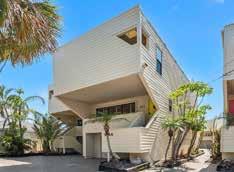











A new shoreline fishing tournament is reeling in local anglers this July, thanks to a recently relocated aquatic apparel company.
Tunaskin Aquatic Apparel, which opened its new storefront at 5125 Ocean Blvd. on April 5, is hosting the inaugural Coastline Cast Fishing Tournament—a beach-based, catch-and-release competition designed for everyday fishing enthusiasts.
“We wanted to create something that doesn’t require a million-dollar boat,” said Ben Duval, events director at Tunaskin. “All you need is a fishing rod and a partner.”
The tournament is set for Saturday, July 12, and is limited to teams of two fishing from public beaches only—no docks, piers, or private property allowed. Target species include snook, redfish, and trout, and participants must catch one of each to qualify for top standings.
Duval, who also handles partnerships and PR for Tunaskin, said the company designed the tournament for accessibility and fun. A $75 entry fee covers an adult team of two, while junior teams (ages 15 and under) can enter for $50.
Participants may use artificial lures or bait, but live or frozen bait can only be caught or purchased after the 7 a.m. “linesin” start time. Tunaskin staff will be catching bait the night before and placing it in floating traps available for use.
Each catch must be photographed next to a ruler and texted to a designated number.
“We’ll be tracking everything live with a spreadsheet,” Duval said. “We’ll have first, second, and third place winners, plus a category for the longest single fish.”
Winners will be announced at a noon awards ceremony at the Beach Club in Siesta Key Village, where over $2,000 in cash
By Mackenzie Palmer

and prizes will be handed out— including $750 for first place, $500 for second, and $250 for third. Bonus prizes include categories for largest fish, largest trash fish, and other fun surprises.
To kick things off, a captain’s meeting will be held at 6:30 p.m. on Friday, July 11, at the Tunaskin store. Participants will review tournament rules, boundaries, and receive an exclusive longsleeve hooded sunshirt featuring the tournament logo.
TunaSkin previously operated in St. Armands for six years but relocated to Siesta Key after
multiple hurricane-related store evacuations. The company specializes in “hybrid” aquatic apparel—items made for both water and land—85% of which are crafted from 100% recycled plastic.
The Coastline Cast joins TunaSkin’s other tournament events, including the Mid-May Mayhem in Fort Myers Beach and the offshore Grouper Grapple charity tournament. This latest event aims to bring the thrill of fishing to a broader audience.
For more information or to register, visit tunaskin.co.



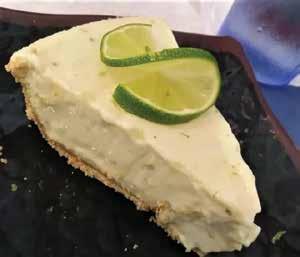

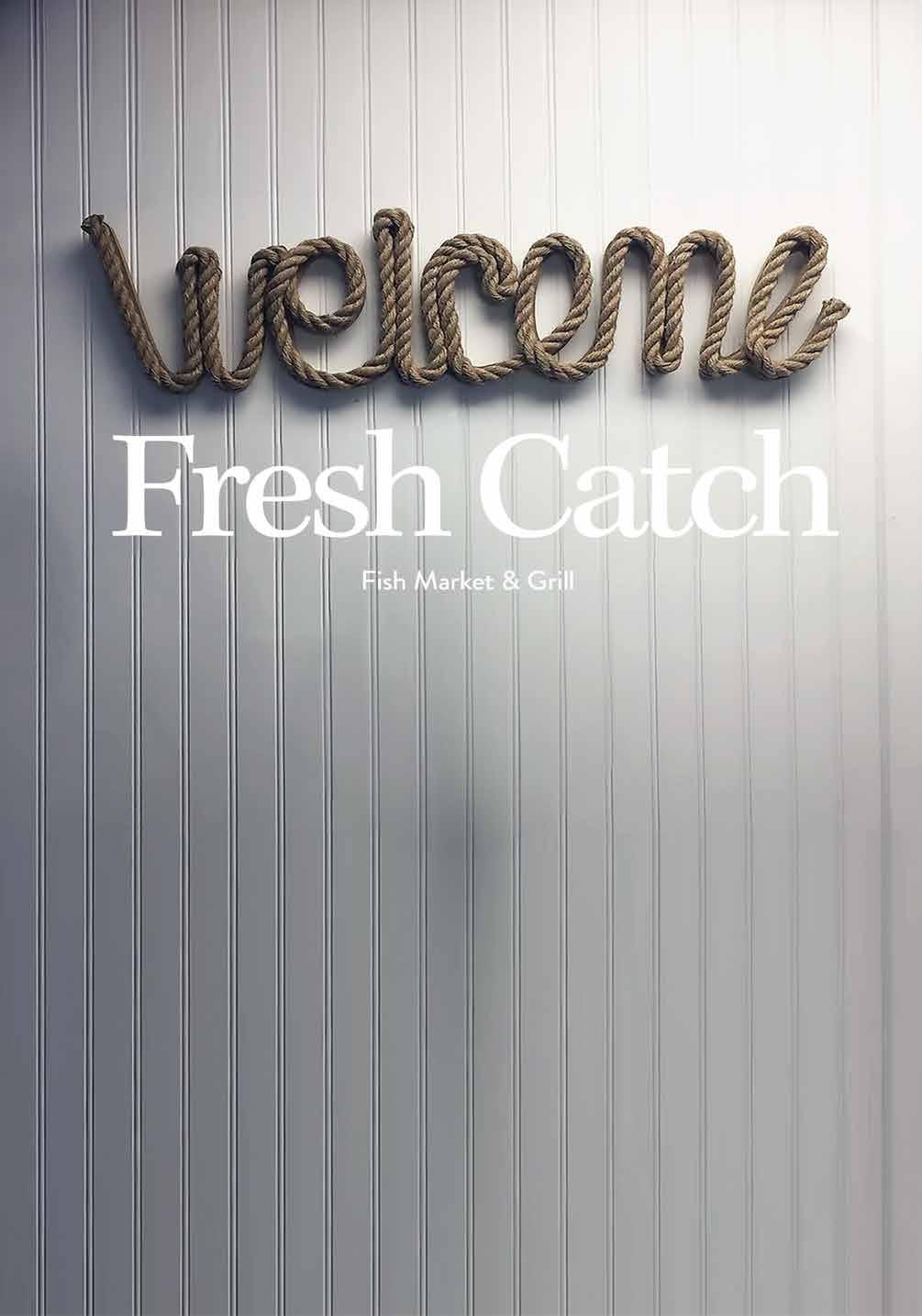


Favorite for really fresh seafood. We eat "Linnner" at 2-3 PM frequently, and we eat here often. Lots of restaurant choices in this area, but we always end up here on seafood days. Their options are many, prepared to order, and fresh with the season. The service is really good, too. A very casual ambiance.











By Kathryn
As we all know, life gets busy. We strive to navigate our daily lives to achieve our set intentions. Typically, most of our duties require us to leave the island. Yet, there is one aspect of our daily lives here on Siesta Key that many of us probably never even consider. If we leave the island, we see it every time and pay no attention to it. Yet, this forgotten presence is vital to our daily lives and safety. What is it you ask? The bridge tenders of Siesta Key. Siesta Key has only two bridges that allow access to the island. They are the “North Bridge” (Siesta Drive) and the “South Bridge” (Stickney Point Road).
A bridge tender (a.k.a. bridge operator or bridge keeper) is responsible for operating and maintaining a bridge to facilitate safe passage for both vehicle and waterway traffic.
The North Bridge was the first Siesta Key bridge erected in 1917. At that time, it was called the Bay Bridge. It was dedicated to Siesta Key by Mayor Harry Higel, who was a vital contributor to the island’s development. The first bridge tender was Captain Charles Robinson. The South Bridge opened in 1927. It was named after Uncle Ben Stickney, who was a wellrespected and amicable local (Jeff LaHurd, author).
Today, Ron Farwell leads the team of bridge tenders of Siesta Key. Farwell is originally from Kansas and served twenty-one years in the US Air Force. He then worked another twenty years for Goodyear. Upon retirement, Farwell moved to Venice, Florida. It was there that he was offered the opportunity to work as a bridge tender. For the next nine years, Farwell tended to his bridge duties and gradually worked his way up to a major leadership role through the company, Velocity. Velocity,

based in Atlanta, Georgia, is a services company that oversees the IBEW (International Brotherhood of Electrical Workers). IBEW, the largest local union in the state of Florida, is a member of Velocity. The two Siesta Key bridges are governed by FDOT (Florida Department of Transportation) because they lead to state roads. One of the most impressive aspects of Farwell’s experience with the Siesta Key bridges is that they maintain a zero-accident record for vessels. However, problems sometimes arise with pedestrians. The main issue is that pedestrians do not abide by the rules regarding the bridges’ openings and closings, thereby endangering themselves.
By Kathryn Campaigne



The first bridge tender was in Deerfield Beach, Florida, operated by a man named Payette. The bridge he tended was a movable bridge that allowed boats to pass through. However, the most notorious place for the origin of bridge tenders was in Chicago, Illinois, in the 1840s, with the rise of the Chicago River bridges. Since then, the evolution of bridge tenders has progressed simultaneously with engineering innovations.
According to the Florida Department of Environmental Protection Geospatial Open Data, there are approximately over 9,800 bridges in the state of Florida. It is in contention which was the first bridge in Florida.
• The Old Seven Mile Bridge: originally part of Henry Flagler’s Overseas Railroad, constructed between 1909 and 1912, was one of the longest bridges in the world at the time. A remarkable feat of engineering. Connecting the Middle Keys to the Lower Keys. (6.79 miles long).
• The Bridge of Lions: Built in 1927. Spans the Matanzas River in St. Augustine, connecting downtown with Anastasia Island.
• The Acosta Bridge: 1920s. First automobile and pedestrian crossing over the St. John’s River in Jacksonville.
• The Gandy Bridge: 1920s. Connecting St. Petersburg and Tampa.
• The Venetian Causeway: 1920s. Miami. Connects mainland Miami and Miami Beach.
The minimum requirements to become a bridge tender include having a high school degree or GED, being at least 18 years of age, and possessing a valid driver’s license. The current hourly wage in Sarasota is $15 per hour. An extensive four-day training period is required upon employment to achieve the proper certification. A bridge tender is required to achieve individual certification for each bridge that they will be tending.
Key’s Bridge Tenders Campaigne

Another problem area involves bicyclists who injure themselves while biking over the drawbridge. The drawbridge is made of aluminum grating and can be quite painful to fall on. If an accident occurs on the drawbridge, the bridge tender is required by law to call the Sheriff and report the incident. When this happens, the bridge will cease motion and traffic until the case is resolved.
A typical day for a bridge tender is an eight-hour shift, with four days on duty followed by four days off duty. There is always a bridge tender on duty. No matter what. As Farwell said, “the bridge never takes a vacation.” During their shifts, the bridge tenders are required to look out and observe all marine and pedestrian traffic every fifteen minutes. Before the opening and closing of the bridge, the tender must take a full view of all activities surrounding the bridge twice, before proceeding.
A new technological system called LiDAR (Light Detection and Ranging) is currently being introduced to the Siesta Key bridges. This system will allow fuller access to all bridge activities.
During a bridge tender’s shift, aside from their regular duties, they are permitted to have their personal laptop and phone. They can
watch TV, read, and enjoy similar activities while on duty. The bridge house itself is equipped with a TV, refrigerator, and microwave. There is a bathroom and AC/ heat. The bridge house structure is comprised of 8-inch concrete walls, bullet-resistant windows, and self-generated power. As Farwell commented, “The safest place to be during a hurricane is probably in one of the bridge houses!”
There are allotted times for vessels to pass through the bridges on Siesta Key. Both bridges open on the hour and half hour from 6 a.m. to 7 p.m. Outside of those hours, they will open on signal. The signal is one long blast (four to six seconds) followed by one short blast (one second) to request a bridge opening. If the bridge tender returns the signal, the drawbridge can be opened immediately. The bridges will open at any time for tug and barges, the Coast Guard, boats in distress, and any boat in tow. The bridge can be hailed on VHF Channel 9.
Our bridge tenders have an enormous responsibility. Their main objective is public and boater safety. They are diligent in their duties. When I asked Farwell,” What can we do better to assist the Siesta Key bridge tenders?” His response was, “When you hear the bells ringing and see the red lights flashing, we need you to stop behind the gates.” I further asked, “What else can we do to show our appreciation?” His response was, “If you look up and see us standing, give us a wave and a smile!”
Let’s bridge together on Siesta Key for our appreciation of our bridge tenders. With the 2025 Hurricane Season upon us, let us recognize and celebrate those who help us with full hearts of dedication to our safety without requiring recognition.

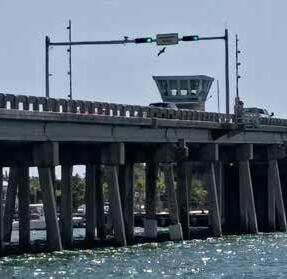

HAPPY HOUR 4pm-6:30pm Happy Hour Food & Cocktails
MONDAY PRIX-FIXE MENU
3 Course Menu for $27.99 Every Monday
OPA WEDNESDAY! Saganaki Opa! Appetizer $8.99 WINE THURSDAY





July is national ice cream month. The delicious day that celebrates all things ice cream came to be in 1984 when President Ronald Reagan, known to have quite a sweet tooth, designated July as national ice cream month and the third Sunday of July as national ice cream day.
In and around Siesta Key, the names Abel’s Ice Cream and Orange Octopus Ice Cream stand out as go-to places for locals and visitors alike. In the spirit of this month-long celebration, we paid a visit to both places to see what’s new in the ice cream world. At Abel’s Ice Cream, 1886 Stickney Point Road, near Siesta Key’s south bridge, Jerry and Jill Williams will celebrate Abel’s 15th birthday in December 2026.
Abel’s Ice Cream
Named the #1 ice cream shop in Sarasota by Trip Advisor, Abel’s features more than 40 flavors of Florida-made ice cream as well as dairy-free sorbets and plant-based non-dairy desserts.
“We were named the 2025 bronze winners for Best Ice Cream by SRQ Magazine,” said Jerry Williams. Clearly, Abel’s is his happy place. “It’s ice cream,” he said with a big smile. “How can you not be happy with ice cream?”
So, what’s new at this little sweet shop that locals and visitors alike simply refer to as Abel’s?
“We have lots of summer flavors,” said Williams. Lemon sorbet is very refreshing and Holy Chip & Cherry is another new flavor. For July, we’ll also have peach ice cream and other fruity flavors like raspberry.”
Another big Abel’s seller is the non-dairy coffee almond fudge. Plant-based offerings include cookies & cream crumble and mint chip. “All of our ice cream is gluten free, unless it has additional foods in it such as cookies,” he explained. “Our part-time high school and college student workers are all trained to be fully aware of food allergies.”
Speaking of kids, Abel’s kid’s
July is national ice cream month
By Jane Bartnett
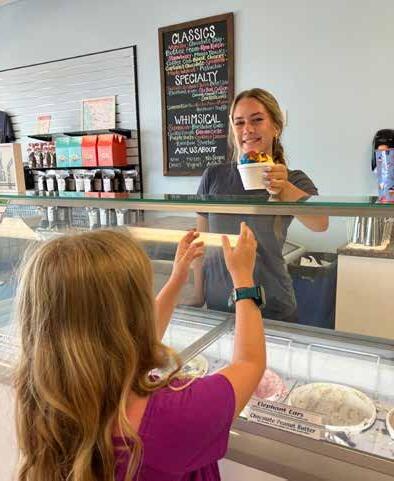
flavors, that often appeal to grown up kids too, include Birthday Cake, Mint Chip and Superman. “Our milkshakes are really good. We make them the old-fashioned way. Just add milk and ice cream.”
In addition to ice cream, Abel’s is now selling their own brand of coffee beans called Siesta Joe. It can be ground in-store. The coffee is a natural addition to the shop’s selection of handmade chocolates that are made by Sweet Shop USA of Mount Pleasant, Texas. Displayed in a large glass case, they are sold by the box in quantities of four, six or 12 chocolates. Single pieces are also available. They are as pretty to look at as they are delightful to eat.
Orange Octopus Ice Cream
On the other side of the Siesta Key Bridge, Orange Octopus Ice Cream, in Captain Curt’s Village at 1220 Old Stickney Point Road, is another beloved landmark ice cream store. A go-to destination in the Crescent Beach area for some 15 years, the cleverly named shop is owned and managed by Kim and Moncef Bennaji. It’s a family business that features the couple’s own ice cream recipes that are made in the kitchen of their second location at 4141 South Tamiami Trail. Kim’s parents also lend a hand, churning the ice cream. “The best thing is our customers,” said Moncef. “Kids and parents, they’re all happy when they walk in. We’re in the business of happy.”
Orange Octopus offers 24 flavors such as Dutch Coco Late, Ooey Gooey Brownie. Strawberry, chocolate and vanilla are also on the menu. The flavors change as new recipes are created and as the seasons change. Lemon sorbet is on the menu for the summer. “We usually have three dairyfree sorbets made with real fruit. Raspberry, mango and coconut chip are among the flavors,” said Moncef.
The homemade quality and attention to detail in creating Orange Octopus’ delicious ice cream is something that Moncef and Kim are very proud of. “When we make ice cream, we want you to taste the flavors. Sea Salt Caramel is our #1 seller,” he said. “We want you to taste the salt and the caramel. We want the flavors to pop.”
Creativity is part of what they do. When Orange Octopus introduced a new adult-only
bourbon ice cream flavor, with Evan Williams Brandy and clover honey, the Kentucky distillery ordered 12 tubs for their bourbon festival.
To meet the taste test for little kids, Orange Octopus offers handmade birthday cake ice cream, with bits of cake mixed in, cotton candy ice cream and cookie dough ice cream.
Seasonal ice creams are on the menu throughout the year. “For back-to-school time, we have peanut butter and jelly ice cream,” said Moncef. In the fall, we’ll have pumpkin spice ice cream and gingerbread ice cream too. At Christmas time: maple walnut. And, to celebrate the new year, we had some fun with the pineapple drop in downtown Sarasota and created a pineapple champagne sorbet, for adults only!”
During this national ice cream month, celebrate. Enjoy a scoop of your favorite ice cream.













As Sarasota slips into its slower season and the fairways clear out, local golfers know it’s time to swing into one of the area’s bestkept secrets: reciprocal season. That’s right—summer isn’t just for beach days and BBQs. It’s also the perfect chance to putt yourself out there and play some of the region’s top private courses without the usual membership hoops.
What Are Golf Reciprocals, anyway?
During the summer months— typically May through October— many private golf clubs in Sarasota, Lakewood Ranch, Venice, and Bradenton open their doors to members of other local clubs. It’s like a VIP club swap, giving you access to new greens,
of golf reciprocals this summer
By Scott Dolan
new challenges, and a fresh excuse to dust off that lucky driver.
In other words, if you’re already a club member, this is your golden opportunity to course-correct your usual routine and explore new turf.
How to Use Your Reciprocals
1. Chat with your pro shop –They’ll have a full list of reciprocal partners and can help you book tee times at other clubs.
2. Book ahead – Summer may be quieter, but popular courses still fill up fast—especially on weekends or for early tee times.
3. Respect the rules – Each club has its own etiquette, so doublecheck dress codes, pace of play, and guest policies. Don’t be the guy who shows up in a tank top to
a jacket-required clubhouse.
Swing-Worthy Courses to Check Out
Here are a few standout private clubs that often offer reciprocal play (just double-check with your club for availability this season):
The Founders Club (Sarasota) Classic, quiet, and beautifully manicured—this course is a foundational favorite for players who love a serene, walkable round.
Laurel Oak Country Club (Sarasota)
With two championship courses designed by Gary Player, this club is ideal for players who want to double the trouble (and the fun).
University Park Country Club (Bradenton)
A 27-hole layout with gorgeous tree-lined fairways and excellent conditions. It’s a “hole” new world every time you play.
Venetian Golf & River Club (Venice)
Expect strategic holes, rolling fairways, and fast greens. Bonus points for birdies and birds— there’s plenty of nature here too.
The Oaks Club (Osprey)
Two top-tier courses with water views and elevated design. Playing here feels like living the high club life.
Lakewood Ranch Golf & Country Club (Lakewood Ranch)
With multiple layouts including Arnold Palmer designs, this one’s a bucket-list local experience for serious golfers.
Final Thoughts: Don’t miss the fairway on this one Summer golf in Sarasota isn’t just about surviving the heat—it’s about thriving on new courses, sharpening your swing, and enjoying the game beyond your home club. So go ahead: chip away at your summer boredom, explore new fairways, and score some unforgettable rounds while the sun’s shining and the greens are wide open.
Because in Sarasota, summers for swinging. And this season, you’ve got a lot more tee boxes to check off.

Discover the heart of vibrant community living at Bay Village, where welcoming connections flourish and friendships blossom. Please call us at 941.966.5611 to schedule a tour and learn more.
Scan the QR Code to visit our website.
By Scott Dolan & Chelsea Malcolm
When Florida’s summer heat rolls in like a sun-soaked wave, we’re all searching for a fresh way to cool down. This year, grab a cold one and head straight to the half shell— because cold water oysters are the pearls of summer dining.
Harvested from the chilly, pristine waters of places like Prince Edward Island, Maine, and the Pacific Northwest, these oysters are known for their crisp flavor, clean finish, and perfectly plump texture. They’re a refreshing contrast to the heat and humidity of Florida’s steamy afternoons.
Why Cold Water Oysters in the Summer?
Thanks to modern aquaculture and refrigeration, the old “only in months with an R” rule has officially been tossed out with the shells. Cold water oysters are available yearround and taste their best in summer—when their northern waters are still cool and full of nutrients.
Plus, there’s something undeniably satisfying about slurping back an icy oyster while basking in the Florida sun. It’s like nature’s seafood popsicle—if popsicles were fancy and served with lemon wedges.
The Best Ways to Enjoy Them
Whether you’re a seasoned oyster lover or a first-time slurper, here are a few delicious ways to dive in:
Raw on the Half Shell –
Classic and classy. Add a splash of lemon, a dollop of horseradish, or a drizzle of mignonette. Bonus points for pairing with a crisp white wine or bubbly.
Grilled or Charbroiled –Perfect for those who like a little fire with their flavor. Garlic butter, Parmesan, or even bacon make great toppings. (You can’t spell “grill” without “ill”—as in, “these oysters are ill-in’ it.”)
Oyster Shooters – A bold move for hot summer nights. Served with cocktail sauce and a splash of vodka or tequila, they’re basically a coastal cheer in one gulp.
Where to Find Them
You’ll spot cold water oysters at many local seafood spots and raw bars along Florida’s Gulf Coast. Two reliable gems are Big Water Fish Market and Siesta Key Oyster Bar (SKOB) on Siesta Key, where they regularly feature top-quality oysters flown in fresh and ready to impress. Whether you’re grabbing a dozen to go or shucking seaside, it’s a shore thing.
Final Shell-ebration



So, if you’re feeling hot, bothered, and hungry this summer, don’t sweat it—slurp it. Cold water oysters bring a taste of the north to Florida’s tropical table, and they’re the ultimate way to stay cool, coastal, and classy.
Let’s just say: this summer, we’re living on the shuck side.









In the relentless pursuit of peak performance, there’s a crucial element that separates good athletes from great ones—and it’s not just about how hard you train. It’s about how well you recover. Recovery isn’t just downtime; it’s an active, strategic process that determines whether your next workout will be stronger than your last.
Who Needs Recovery?
Everybody!
Whether you’re a 5-star athlete competing at the highest levels or a 9-5 office worker squeezing in gym sessions before dawn, recovery is your secret weapon. The weekend warrior pushing through CrossFit WODs, the marathon runner logging miles on city streets, the powerlifter chasing personal records—they all share one fundamental truth: adaptation happens during recovery, not during the workout itself.
Your muscles don’t grow stronger while you’re lifting weights; they grow stronger while you’re sleeping, eating, and actively recovering. This is when your body repairs microscopic damage, replenishes energy stores, and builds the adaptations that make you faster, stronger, and more resilient.
The Recovery Arsenal: Five Game-Changing Tools
Sauna: The Heat Advantage Step into a sauna, and you’re entering a recovery powerhouse. The intense heat of 170-200°F triggers a cascade of beneficial responses. Your heart rate increases, mimicking moderate exercise, while blood vessels dilate to improve circulation. This enhanced blood flow delivers nutrients to recovering muscles and helps flush out metabolic waste products.
The heat also stimulates the release of heat shock proteins, which protect cells from stress and aid in muscle repair. Regular sauna use has been shown to reduce inflammation markers, improve cardiovascular health, and even boost growth hormone

production—a key player in muscle recovery and adaptation.
Cold Plunge: The Chill Factor
If heat is recovery’s warm embrace, cold plunging is its invigorating slap. Immersing yourself in water between 45-55°F for 2-4 minutes triggers vasoconstriction, reducing inflammation and numbing pain receptors. This natural antiinflammatory response helps minimize exercise-induced muscle damage.
Cold exposure also activates the sympathetic nervous system, leading to the release of norepinephrine—a hormone that enhances focus, mood, and stress resilience. The contrast between hot and cold therapies creates a powerful one-two punch that optimizes circulation and accelerates recovery.
Massage: The Hands-On Healer
Massage therapy goes far beyond relaxation. Deep tissue work mechanically breaks up adhesions in muscle fibers, improving flexibility and range of motion. The pressure applied during massage increases blood flow to targeted areas, accelerating the delivery of oxygen and nutrients while helping remove metabolic byproducts.
Research shows that massage can reduce delayed onset muscle soreness (DOMS), decrease inflammation markers, and improve sleep quality. Whether it’s a professional sports massage or selfmassage with tools like foam rollers and percussion devices, this tactile therapy is essential for maintaining tissue quality and preventing injury.
Peptides: The Molecular Mechanics
Peptides represent the cutting edge of recovery science. These short chains of amino acids act as signaling molecules, directing cellular processes that enhance recovery. Growth hormone-releasing peptides can stimulate natural growth hormone production, accelerating tissue repair and muscle growth.
BPC-157, often called the “body
protection compound,” has shown remarkable healing properties for tendons, ligaments, and muscles. Meanwhile, peptides like TB-500 can enhance cellular repair and reduce inflammation. While this field is rapidly evolving, peptides offer targeted, biological approaches to optimization that work at the cellular level.
Acupuncture: The Ancient Art of Modern Recovery
This 3,000-year-old practice has found its place in modern athletic recovery protocols. Acupuncture works by stimulating specific points along meridians, influencing the nervous system and promoting the release of endorphins—the body’s natural pain relievers.
Studies show that acupuncture can reduce muscle soreness, improve sleep quality, and accelerate healing. It also helps regulate the autonomic nervous system, shifting the body from a stressed, sympathetic state to a recovery-focused, parasympathetic state. Many elite athletes swear by regular acupuncture sessions as part of their recovery routine.
The Synergistic Effect
These recovery modalities don’t work in isolationthey create a synergistic effect when combined strategically. A typical recovery session might include 15-20 minutes in the sauna, followed by a 3-minute cold plunge, ending with targeted massage work. This combination maximizes circulation, reduces inflammation, and promotes deep relaxation.
The Bottom Line
Recovery isn’t optional—it’s where champions are made. By incorporating these five powerful tools into your routine, you’re not just recovering from your last workout; you’re preparing for your next breakthrough. Remember, the goal isn’t just to bounce back; it’s to bounce back stronger, faster, and more resilient than before.
Your future self will thank you for the investment you make in recovery today.


In the age of social media, it’s easy to find advice on just about anything — including how to manage your money. Content creators known as “finfluencers” — short for financial influencers — use platforms like TikTok, YouTube and Instagram to share their takes on investing, budgeting and building wealth. Many of them are charismatic and relatable, and they often speak from personal experience. But while their content may be engaging, taking financial advice from a finfluencer without digging deeper can come with significant risks.
While some finfluencers may have formal training or credentials, many do not. Instead, their influence stems from their popularity rather than professional experience. But popular advice may not necessarily be good advice. A 2025 study by the Swiss Finance Institute even found that unskilled finfluencers typically have larger followings than skilled ones.
Why be cautious?
For young or new investors, social media can make finance feel accessible. In fact, a 2022 FINRA study says that more than 60% of Americans younger than 35 get investing information from these platforms. But social media isn’t regulated the same way traditional financial advising is, so anyone, qualified or not, can offer financial tips.
Unlike traditional financial

advisors, finfluencers don’t know your unique goals, financial situation or risk tolerance. And likely, they’re not licensed (you can check here: Check Out Your Investment Professional | Investor.gov). Even well-meaning guidance might lead you down a risky path if it’s not tailored to your needs. And unfortunately, some finfluencers have exploited the trust they build with followers to promote questionable investments or outright frauds.
Warning signs to watch for Here are a few signs that a finfluencer’s advice may be worth
avoiding:
• Unrealistic “get-rich” promises: Claims like, “Turn $500 into $50,000 in a year,” are highly improbable and may indicate a scam.
• Hurry, hurry: Be wary of advice that pressures you to act fast or plays on fear of missing out. Important financial decisions shouldn’t come with a countdown clock.
• Flashy displays of wealth: Images of luxury cars, watches or cash can be more about generating views than offering sound advice. If a finfluencer is trying that hard to
convince you to take an action, it often means they will profit — perhaps they’ll get paid to promote a product or service, or earn a fee for referring you, or are trying to boost clicks and followers to earn more.
What you can do
• Do your own homework. Don’t take finfluencers’ advice at face value. Cross-check it with reliable sources. The finfluencer may even be under investigation by a federal or state securities regulator. Talking to a licensed financial advisor you trust can help you
discern good advice from the bad.
• Recognize conflicts of interest. If a finfluencer promotes a product or service, find out if they’re being paid to do so. And remember, online personalities make money by generating high viewership, not because their advice has a track record of success.
• Use common sense. When something sounds too good to be true, it usually is. And of course, never disclose your bank or brokerage account numbers to a finfluencer, and never send money. Finfluencers can make financial topics more engaging and accessible. But when it comes to your money, a social media video from someone who doesn’t know you is no substitute for informed, personalized guidance. Take the time to verify, research and, when in doubt, seek advice from a professional.
Joe St. Onge, ChFC® Financial Advisor, Edward Jones Investments 5011 Ocean Blvd., suite 205 Siesta Key, FL 34242 (941)-346-0560 phone (941)-320-4030 mobile Joe.StOnge@edwardjones.com

There is a false belief that if you work out consistently, you should be able to eat whatever, whenever, in any amount. My favorite belief is, “I work out hard during the week, so I cheat on the weekends.” Cheating, they go on to explain, is eating high sugar content food, highly processed food, and alcohol. Usually lots of alcohol. This is the recipe to nullify most of your dedicated work. You must follow the path of sound nutritional rules to go along with an effective exercise plan.
Diet must be fine-tuned and customized to what works for you. You’ll have to monitor and tweak as necessary. I’ll get you started: eat to optimize human performance. Do not eat to cope with stress or boredom.
You may not be a “bodybuilder” but everyone needs to strive to build or maintain lean muscle mass. To do so you need to eat enough protein. If you are training, shoot for one gram of protein per pound of bodyweight. If you come up a bit short, it will be alright. If you weigh 180 lbs. your protein consumption should be near 180 grams a day. On average, an egg contains 6 grams of protein; a 3 oz. chicken breast has 26 grams; a 3 oz. salmon fillet has 17 grams, and
By George Demetriou

a ribeye steak has 28-42 grams. Eat real food as much as possible. Real food generally has a single ingredient and spoils relatively quickly. Eliminate or limit the consumption of processed food. Processed food can last in your cupboard or freezer for months or years in some cases.
Autoimmune conditions, such as inflammation, digestion issues, and joint pain, may be a result of consuming food that is not agreeable to you. The usual culprits are grain foods (bread, rice and pasta) or dairy foods (milk or cheese). You may have to experiment
with eliminating the suspected food or food group for a month. Then reintroduce the food and monitor the results. For most people, the food that was in existence before agriculture was invented is best. It is the least likely to cause problems.
Meat, fish, fruits, vegetables, some nuts and seeds are generally the healthiest choices. For meat, you want grass-fed and finished. For fish, the preferred would be wild caught. For poultry, the best choice is organic.
Stay properly hydrated. Half your bodyweight in ounces of water is the goal. If you weigh 200 lbs., then 100 ounces of water is a good guideline. You’ll need a bit more if you are engaged in physical activity. Milk, juice, coffee, and alcohol don’t count toward hydration. Drink 16-32 ounces of water to start your day. Make this a habit.
Carbs are not your enemy, but everybody is different. You’ll need to experiment with carbohydrate consumption. Here’s a fact worth considering: There is no such thing as an “essential” carb. Your carb sources should come from fruits and vegetables.
You need healthy fat. There is such a thing as an essential fatty acid. The best sources of fat are avocado, olive oil, and coconut
oil. Go easy on the healthy fat. Drastically reduce or eliminate sugar consumption. Do not keep food you should not eat in your home.
Vitamins and minerals are good to supplement because soil depletion may leave some of our food lacking in the proper levels. Supplementing requires research or an expert’s advice. If seeking professional advice, do your research.
Most medical doctors get under 10 hours of nutrition training in medical school. The medical doctors who are experts in nutrition have studied the research of those who specialize in nutrition. You want to find someone who can provide advice that is based on your medical conditions, age, gender, and bloodtest results.
There are various diets. They all work, at least temporarily, depending on the individual. Experiment and discard what isn’t working for you.
There is much more to diet and nutrition, but this should serve as a good start. You have total control over your food choices. Eat to be the best version of yourself. Eat to optimize performance, health, and body composition. Start now. Improve day by day. You can do it!



Ball pythons are by far the most popular pet snakes for good reason. With a generally placid disposition, they are the perfect snake for beginner and expert handlers alike. Also known as Royal Pythons, they are typically so easy going that ancient Egyptian aristocrats used to "wear" them around their wrists and necks as a sign of high status. The more common name, Ball Python, comes from their tendency to curl up like a ball with their head in the middle when threatened. Youngsters typically start out on a diet of live or "frozen thawed" fuzzy mice and work their way up to larger rats as adults. Captive care is relatively simple as they don't need much more than a snug hiding place, a source of heat, clean water, and a weekly meal to thrive.
Typical appearance and behavior:
• Ball Pythons are bred with a near endless variety of color morphs. Depending on the animals' genetics, they are available in thousands of unique colorations and patterns. Ball Pythons are typically nocturnal, so they are much more likely to be out and about at night when then lights are o .
Like most other non-venomous snakes, Ball Pythons are constrictors, meaning they quickly grab and coil their bodies around their prey before swallowing the prey whole.
• Adults are typically as easy going as it gets, a Ball Python is happy to snuggle up around your neck or arm for as long as their handler pleases.











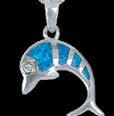


Microcu r rent Facia ls a re a powerf ul a nt i-ag i ng t reat ment t hat t ighten s a nd
ton e s fac i a l mu s c le s a nd st i mu l at e s
a nd n e c k, r e stor i ng s upple n e s s a nd
a yout h f ul glow wh i le t ighten i ng t he
fa c i a l mu s c le s T h i s m a c h i n e b a s e d
t reat ment sends elect r ica l i mpulses of ver y low volt age but h ig h f requenc y
t h rough t he sk i n resulti ng i n a more
y o u t h f u l a p p e a r a n c e C r o w ’ s f e e t
b e g i n t o di s a p p e a r, e y e b
a n d c h e e k b o n e s a r e m o r e d e f i n e d

C l ie nt s nor m a l ly fa l l a sle ep du r i ng t he fac i a l a s it is ext remely rela x i ng a nd pa i n less T here is no
dow n t i m e a n d c l i e n t s m ay g o o ut s id e w it h n o
con c e r n s a f t e r t r e at me nt s Spa D i r e c tor, Con n ie
Lew is has been per for m i ng m ic ro - cu r rent facia ls si nce 2005 a f ter lea r n i ng t he tech nolog y du r i ng her st udies at Fash ion Focus Academy where she ear ned
by t he results I persona lly exper ienced on my ow n face I i m mediately acqui red t he mach i ne r ight out of school,” says Lewis
Re s u lt s o f t he t r e at m e nt s a r e c u mu l at ive a n d
t he b e st v i sible re su lt s a re a f ter a s er ie s of 5 - 10 t reat ments t hen mont h ly or week ly t reat ments a re
r e com me nded dep e nd i ng on sk i n cond it ion a nd desi red result
T he system i s completely sa fe a nd t reat ment i s non-i nvasive The cur rent is ext remely low, less tha n t he out put of a pacema ker T he system operates on a per-prog ra m med set ti ng a nd conta i n s ca librated internal data mon itoring and resistance meters Th is a llows f ull com for t to t he client as well as opt i ma l perfor ma nce a nd results for t he operator
Microcurrent treatments are usually performed within 45- 60 minutes, and a re u sua l ly pre s c r ib ed i n a ser ie s of 6 to 12 treatments over a course of 60 days with one to two treatments a week re com mended for m a x i mu m resu lt s The number of sessions i n a series is
complete, a monthly “booster” treatment is required to maintain results
Ou r non-i nvasive t reat ment usua lly offers not iceable results even a f ter just one session a nd effect ively g ives you
Like exercise for the other parts of the body, the facial muscles need a regular workout to achieve good muscle tone Muscle reeducation by microcurrent is often referred to as “sculpting” and “lifting ”
T he l i f ti n g a n d s t r e n g t h e n i n g a c t io n h ave a n accumulative effect on the face with each systematic series of treatments, increasing the holding action of the muscles Through repeated sessions, facial muscles will hold their tone Just like the stomach muscles will “re-tone” after repeated sessions of sit-ups During the initial program, we recommend one to two visits a we ek w it h t he tot a l nu mb er depend i ng on t he individual needs A typical course of treatment will range from six to twelve sessions And after that a visit once a month is usually all that is required to maintain good facial muscle tone and youthful appearance
W hen you stop exercisi ng t he body, over a per iod of t i me t he muscle will lose t hei r i ncreased tone a nd
the face It will not sudden ly “fall,” but overt ime will beg i n to resume its nor ma l ag i ng process
Most i ndividua ls wi ll see i m mediate cha nges i n

Watch all the Siesta Sand Live Episodes on our dedicated YouTube channel or listen on
EPISODE 19
Clay Robinson, co-founder & owner of Sarasota-based Sun King Brewery, and producer of Siesta Beach Light (SBL) talks with Siesta Sand Live Host Natalie Gutwein on today’s episode. Grab a cold one and tune into this episode.
EPISODE 18
Larry Frankel, Siesta Key Photo Bomber “bombs” the Siesta Sand Live Podcast on this episode. Thx,

sp e c i a l i st c a n l i f t h a l f of you r face to show you t he di fference compa red to t he ot her side But t he i mprovement is i ncreasi ngly obvious over a per iod of t i me wit h t he ser ies of session s Results depend
W h at ca n m ic r o c u r r ent do for you?
O r ig i n a l ly deve lop e d for t r e ati ng fac i a l pa l s y, m icrocu r rent i n t he est het ic real m ca n:
• Re- educate muscles
• Increase blood a nd ly mph ci rculat ion
• En ha nce t he penet rat ion of t he act ive i ng redients of sk i n ca re for mulat ion s
• Increase t he product ion of collagen a nd elasti n
• Increase protei n sy nt hesis, gluconeogenesis a nd cell membra ne t ra n spor t
Additionally, research has shown that microcurrent may help with anti-aging at an even deeper level In 1982, researcher Ngok Cheng led a study that provided hard evidence of microcurrent’s role in cellular vitality by prov i ng t h at m ic roc u r rent i nc rea sed level s of adenosine triphosphate (ATP) in lab-rat skin cells by 500 percent ATP is the fuel a cell needs to function Actually, ATP is a really big deal as it is the energy that fuels all biochemical functions in the body It boosts protein synthesis, necessary for tissue repair
I
at spaexperiencesiestakey.com or by calling 941- 349 - 4833
Spa Experience, Siesta Key is conveniently
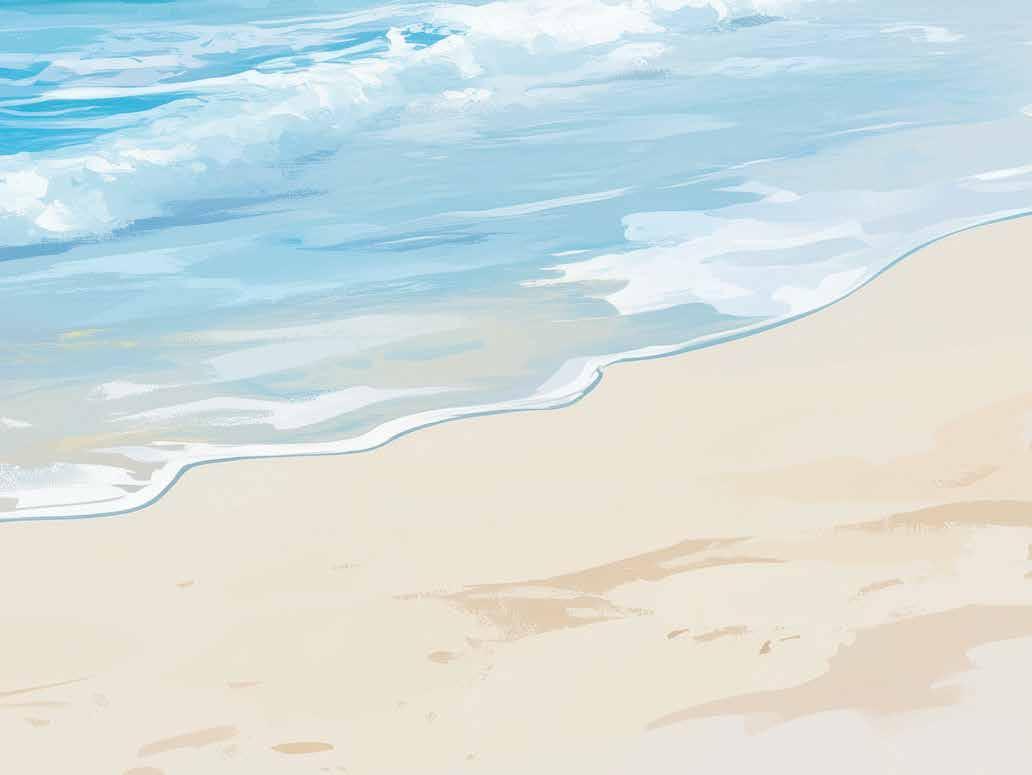






A World-Class Beach Deserves a World-Class Look
Siesta Key has been on the map for decades. Dr. Beach awarded us his top “Best Beach in the U.S.” honor back in 1987, and we’ve continued to collect accolades –from TripAdvisor’s #1 Beach in the Nation and #4 in the world, to a recent nod from Condé Nast as one of the Top 50 Beaches in the World. (We were the only U.S. beach on that list!) But here’s the truth while our sand and sunsets are unmatched, some parts of the island still lack what visitors expect in a top beach destination
As Siesta Key Chamber Chairman Mason Tush perfectly said, “We get the #1 beach designation—we need to look like the #1 beach.”
Our Vision for Siesta Key
There’s nowhere quite like Siesta Key. That mix of natural beauty and laid-back elegance. It’s what keeps people coming back year after year. The SKBA’s goal is to preserve that magic while thoughtfully upgrading the areas that need it most for residents, business owners, and visitors alike. And we are not just dreaming – we are already in motion.
Thanks to $33,000 raised in private donations, we were able to hire a professional engineering firm to develop a master plan. This plan is focused on beauty, function, safety, and long-term sustainability.
What’s on the table?
• Fresh landscaping throughout the island
• Better pedestrian safety and flow
• Improved signage
• Enhanced public spaces and parks
• Integrated public art
• New welcome signage at both bridges
• Re-branding - a consistent theme throughout the island
• And yes, even potential additions like public restrooms
We’re committed to making Siesta Key not just beautiful again—but better than ever.
We’re Not Doing This Alone
One of the most exciting parts?
We’ve got the full support of our Sarasota County Commissioners, who clearly understand Siesta Key’s economic and cultural importance. This is a true public/ private partnership – one that will benefit the entire county and all who visit, for decades to come.
I’ve spoken in front of the Sarasota Board of County Commissioners and the Tourism Development Council where the effort was positively received by both.
This is our moment to reimagine what Siesta Key can be — and we want your voice in the conversation. If you have thoughts, ideas, or questions, I’d love to hear them. You can reach me directly at 941-993-2660 or Natalie.gutwein@gmail.com.
Stay sunny, Siesta!
Natalie Gutwein is a licensed Realtor with Sotheby’s International Realty’s Judie Berger Team on Siesta Key. A resident of the island, Natalie combines nearly two decades of real estate expertise with a passion for helping clients find their slice of paradise. She serves on the board of directors for the Siesta Key Association and hosts the podcast Siesta Sand Live. When she’s not writing or working with clients, you can find her enjoying the island’s beaches, local restaurants, and vibrant community life.












The following are properties sold on Siesta Key in the last 60 days, providing a snapshot of home values on the Key for both single-family homes and condominiums.

600 & 602 BEACH ROAD, #1, #2
$4,400,000
This direct Gulf-front property offers private beach access and unobstructed sunset views. The property includes two individual recently renovated 3-bedroom, 2.5-bath homes styled in a charming beach cottage aesthetic. Refinished kitchens and bathrooms include stainless steel, granite/quartz, wood cabinetry, and high-end fixtures and finishes. Abundant hurricaneimpact windows and doors provide a light-filled and bright ambiance and bring the outdoors in. This unique parcel offers exceptional flexibility: explore the redevelopment potential to create a spectacular single estate or two stunning new beachfront residences. Alternatively, keep the homes as they are and enjoy one as your personal residence while generating income from the other, or lease both as high-performing vacation rentals. Zoned RMF1 and currently managed by Beachside Management, the homes are already under contract for much of 2025, making this an excellent income-producing property from day one.
Courtesy of William Raveis Real estate
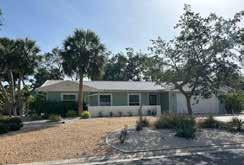
LOWEST PRICED SINGLE-FAMILY RESIDENCE
630 VENICE LANE
$685,000
This property is a 3 bedroom, 2 bathroom residential single family home built in 1971 and sits on a 0.255 acre lot located at 630 Venice Ln, Sarasota, FL. Comes with kitchen appliances and central air conditioning.
Courtesy of Michael Saunders & Company

5750 MIDNIGHT PASS ROAD, #105E
$850,000
Rarely available first-floor condo. This nicely maintained and easy-to-care-for unit is light and bright. The living area has views overlooking the lush tropical landscaping, fountain-lit pond, waterside pool and azure waters of the Gulf of Mexico. Double louvered doors allow privacy to the guest bedroom and bath plus laundry room. The laundry room easily accommodates a full-sized washer and dryer as well as extra storage. The kitchen has eat-in space with ample storage and all new kitchen appliances were installed in 2021 and 2022. The Gulf & Bay Club exemplifies the best of resort-style living with 800 feet of direct beachfront plus numerous amenities.
Courtesy of Premier Sotheby’s International Realty

LOWEST PRICED CONDO
6727 MIDNIGHT PASS ROAD, #202A
$414,000
Welcome to your slice of paradise just steps from the powdery white sands of Siesta Key Beach—voted one of the best beaches in the world! This charming 2-bedroom, 2-bath in the highly sought-after Vista Hermosa community offers the ideal blend of comfort, convenience, and island lifestyle. Fully furnished and move-in ready—perfect as a full-time residence, seasonal getaway, or income-producing rental. Community Amenities: • Heated swimming pool • Clubhouse for social gatherings • Shuffleboard courts Prime Location: • Just a short stroll to Siesta Key’s white quartz beaches • Minutes to Siesta Village’s restaurants, shops, and nightlife
Courtesy of Waterside Realty



A waterfront Siesta Key home known as the Ness House, in the exclusive Sanderling Club, off Midnight Pass, that was designed by the late architect Tim Seibert, one of the leading architects of the Sarasota School of Architecture, has been listed for sale at $5.3 million. The Ness House was awarded historic designation in 2011.
Named for the original owners, the contemporary 4,006 square-foot residence, found at 7647 Sanderling Road, looks out on 135 feet of Heron Lagoon and sits on close to one acre of land.
Originally built in 1958 using the innovative “Lamolithic” poured concrete method developed by builder John Lambie Sr., the home is considered to be a pioneering example of Sarasota School of Architecture design.
Sarasota real estate broker Joel Schemmel, of Sotheby’s International Realty, who has the listing, called the property “an architectural masterpiece reimagined for those with a passion for modernist living.” He noted that the building’s advanced rainwater collection system keeps the home naturally cool with roof outlets and northfacing walls.
In 1971, the Ness family had the house remodeled by the late Sarasota architect Tim
By Jane Bartnett


Seibert. According to the Siebert Architects website, founder Tim Seibert began his architectural career in the Sarasota office of the world-renowned architect Paul Rudolph. In 1955, Seibert launched his own firm and gained national recognition as a leader in the movement known as the Sarasota School of Architecture. Strong geometrical lines well suited to the region’s climate became his trademark. In 1995, he was awarded the AIA Florida Medal for Design.



His firm Seibert Architects PA, “continues his design legacy,” according to the company website. In 2018, Seibert died at his home in Boca Grande. He was 91.
“This waterfront retreat,” said Schemmel, “masterfully blends Seibert’s vision with modern, design-forward living, all in harmony with its lush subtropical setting.” News reports state that, over the years, the home has been updated several times.
The home has four bedrooms, three full baths, two partial baths and a pool. True to its modern roots, the interior features white tile floors and skylights. Natural light connects the interior and exterior and features a covered kitchen, bar seating, grill, beverage area, spacious lounge and dining zones, as well as an open-air space. In keeping with the Sarasota School of Architecture’s philosophy, noted Schemmel, Seibert’s design created a feeling of being outside when inside the


home. Native landscaping, shellinlaid hardscapes, and a one-ofa-kind Ipe wood treehouse are all a part of the residence.
The Ness House was last sold in 2014 for $1.75 million. The gated Sanderling Club is private community on Siesta Key, with a private beach and marina access, as well as 24-hour security. It began as a winter resort in the 1940s. The cabanas and the Sanderling Beach Club were designed by architect Paul Rudolph.








audiences and produced engaging events designed to deepen connections with community partners and donors.” The Community Foundation, according to their website, is a public charity that was founded in 1979 by the Southwest Florida Estate Planning Council. It serves as a “resource for caring individuals and the causes they support, enabling them to make a charitable impact on the community.” Last year, with assets of $544 million in more than 1,590 charitable funds, the Community Foundation awarded grants and scholarships totaling
$56 million dollars in the areas of education, the arts, health and human services, civic engagement, animal welfare and the environment.
Before joining the Community Foundation, Firstenberger was the executive director of the Sarasota-Manatee Originals, a network of more than 70 locally owned independent area restaurants. Fleming noted that as executive director of the SarasotaManatee Originals, Firstenberger “elevated local tourism and dining experiences through beloved events like the Forks & Corks Food & Wine Festival and
introduced new, unique initiatives to showcase the organization’s members.”
Fleming called the chamber’s new CEO a “creative powerhouse with a deep understanding of what makes our community shine, and how to share that story with the world.”
Firstenberger’s vision, said the chamber’s board chair “will grow our visibility, amplify member voices, and foster even stronger connections across our vibrant island community.”
In his written message, Fleming emphasized her strength in event leadership, strategic planning, digital
marketing and public relations.
“I’m honored to step into this role and serve a place I love so deeply,” said Firstenberger. “Siesta Key is not just a destination – it’s a way of life. I look forward to working with our members, partners, and residents to ensure the Chamber continues to thrive and evolve with purpose.” The Sarasota native is a graduate of the University of South Florida.
The Siesta Key Chamber of Commerce is a membershipbased, 501(c)(6) organization, serving the businesses and community of Siesta Key, Florida. The chamber
also operates the Siesta Key Visitor Center which is staffed by more than 30 volunteers. Its mission is to lead through marketing, member service, tourism and business advocacy. Led by a 15-member board of directors, a four-person, full-time staff handles day to day operations. Each year the Siesta Key Chamber of Commerce produces several prominent community events including the annual 4th of July Fireworks celebration and the Siesta Key Crystal Classic International Sand Sculpting Festival that will take place on Siesta Beach, November 14-17, 2025.







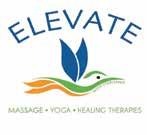

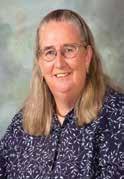













Try our full lineup of Locally-Brewed Signature Beers on draft at Captain Curt's Village, or take home a variety pack of all 4 brews in cans, available exclusively in our Gift Shop!



